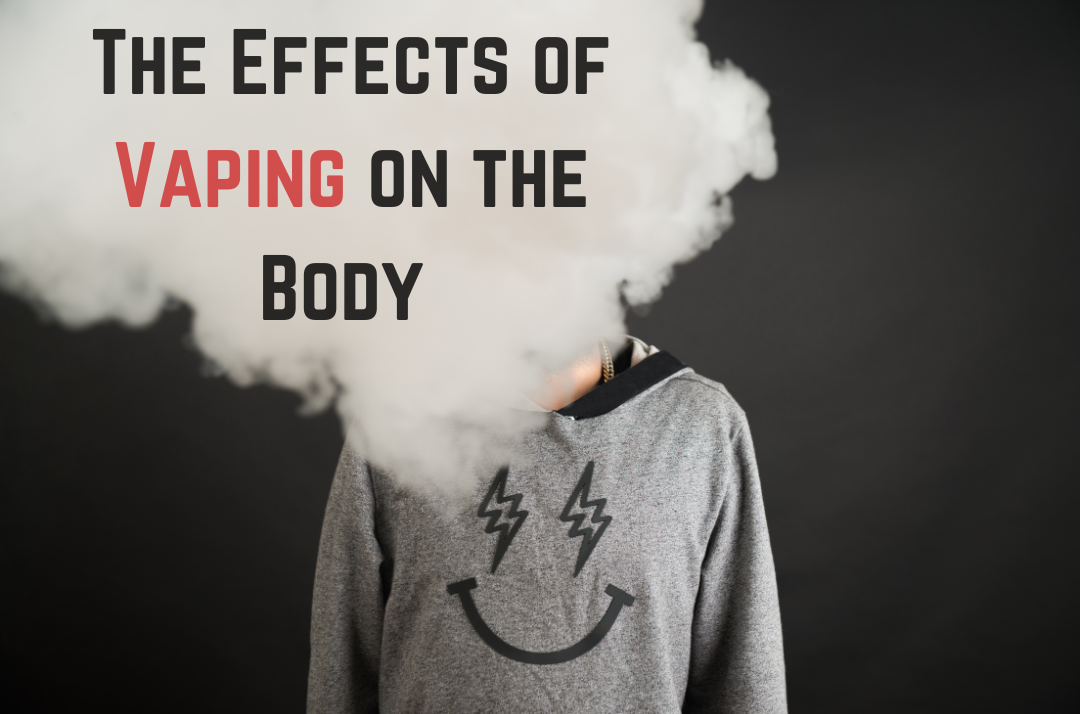Harmless anti-smoking aid or just another dangerous habit?
Vaping is a relatively new trend that was first marketed as an aid to quit smoking. Early marketing campaigns introduced it as a safe alternative to smoking to help long-term smokers wean themselves off nicotine in a safer way while mimicking the hand-to-mouth smoking behavior that many smokers note is a huge part of the addiction. It was not long before Vaping became a huge industry in itself and soon became evident that it did help people quite smoking, it just replaced the cigarette addiction with an addiction to vaping. Not only that, but the countless flavors of vapes and e-juices enticed teenagers and young adults to try it and before long, many people who would have never picked up a cigarette were just as addicted to nicotine as lifelong smokers.
So, what exactly is vaping? As stated, vaping started with E-cigarettes which were originally designed to mimic regular cigarettes. However, since its inception, the technology has dramatically changed and devices now tend to be larger, rechargeable and contain a cartridge that has a liquid inside. When that liquid is passed through an atomizer, it vaporizes the liquid and creates a vapor, hence the name vaping.
We now understand that vaping can be just as addictive as cigarettes, but many users still believe that the habit is far less harmful than smoking, but is this true? Is bringing in that vapor to the human body a bad thing? While the medical community has not reached a consensus that vaping is as bad as smoking, we know that the habit is not completely harmless.
Over the last few years, hospitals have seen an increase in patients with acute lung injuries due to vaping. These injuries are now referred to as “E-cigarette or vaping product use Associated lung injury” or EVALI. These patients come in with symptoms very similar to pneumonia but what testing finds is there was no infective cause to their symptoms. They could not find a viral cause or a bacterial cause to their symptoms but found that they all had these similarities and they had recently been vaping.
So, the idea was that something in that cartridge or that had been vaporized was causing some harm to the lung. But before we get into what they think could be the product or the substance inside that cartridge that were causing damage to the lung, let’s talk a little bit about the symptoms that the patients were coming in with.
Many of the patient’s present symptoms like fever, chills and a generalized icky feeling. They can also experience coughing, shortness of breath, chest pain and even hemoptysis, a fancy word for coughing up blood. All these symptoms make sense if you are breathing something in that could affect the lung tissue and have symptoms that would be symptomatic of a lung issue. However up to 80% of patients with EVALI also experience GI symptoms meaning symptoms such as nausea, vomiting, diarrhea and just generalized abdominal pain.
So, what is the cause of EVALI? What is inside these cartridges and therefore the liquid in the vapor that could be linked or causing EVALI and the symptoms these patients are experiencing? The challenge is that the vape and E-juice industry is not highly regulated. The ingredients that one manufacture might use compared to another manufacture might not be the exact same. However, they have found a lot of common ingredients in these substances, some of which include things like nicotine which we know can cause substance dependence or addictive. They also contain ingredients like propylene glycol or glycerol. These are known as humectants which help moisturize the ingredients within the liquid in the cartridge. In other products, they include ingredients such as tetrahydrocannabinol, THC, and even CBD oils. They also found vitamin E acetate. They can also include over seven thousand flavors, and some have found traces of metal like tin, nickel, chromium, manganese and even arsenic.
Out of all those ingredients, are some of them more problematic than others? Did they find any specific links to contain ingredients? The answer is yes. When doctors examine these patients, they would often observe tachycardia, which consists of rapid heart rate, rapid breathing, and low oxygen saturation. Chest x-rays or CT scans show infiltrations in their lungs or what they refer to as opacities and while the symptoms present as pneumonia, tests show no bacterial or viral cause. So, what’s going on here?
In some cases, a procedure called a bronchoalveolar lavage is done. This is when a scope or a fiber optic camera is put down into the respiratory passageway and the trachea. This procedure allows medical professionals to view the tubing of the lung tissue or the bronchial. Saline, a saltwater mixture is injected into the terminal airways, the bronchioles, and the alveoli. The injected liquid is then removed and analyzed to see what elements are found in the lungs. In patients experiencing EVALI, they don’t find pathogens; they found vitamin E acetate and THC.
When we think of vitamin E, we don’t think of a harmful substance as it is often found in lotions and creams or even ingested. While it is not harmful when ingested, it is processed a lot differently than if it goes down the airway or into the trachea and down into the respiratory passageways and into the lung tissue.
Doctors and scientists have hypothesized that this oily kind of thickening substance that coats the lining of the tubing or the lung tissue causes an inflammatory response, but they do not know if it is interacting with cells in another way that is causing the problem. We don’t know the exact mechanism yet and more research is needed however, because of the strong link of vitamin E acetate to patients with EVALI, the CDC has recommended that vaping companies do not use vitamin E acetate in their products.
They are also recommending that people don’t use products containing THC because of the high numbers of patients that have it present in their bronchoalveolar lavage and had EVALI.
Up until February 2020, the CDC gathered data and they found that 2807 people were hospitalized with EVALI. Out of the 2807, 68 would die, that’s 2.4%, that does not mean that 2.4% of people who vape are going to die, that’s 2.4% of people who get EVALI from vaping.
At the end of the day, we only get two lungs; we should have more respect for ourselves and take care of them.
Tell us what you think; comment below and share this post with your friends!

